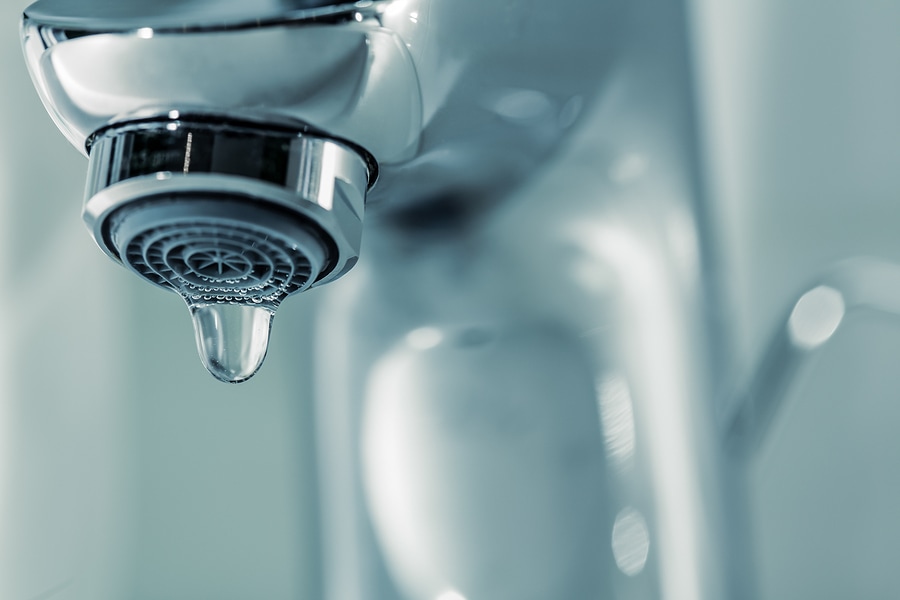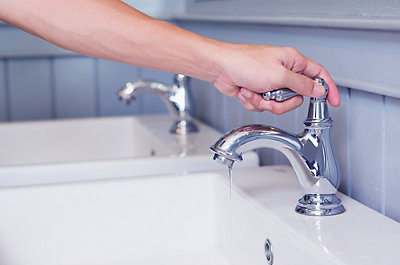Were you on the lookout for critical info about Why Are My Faucets Dripping (And Can I Fix It Myself)??

Trickling taps could look like a small trouble, but their influence exceeds simply the nuisance of the noise. From wasting water to sustaining unnecessary financial prices and health and wellness dangers, overlooking a trickling faucet can bring about various consequences. In this write-up, we'll look into why it's vital to resolve this usual home issue immediately and efficiently.
Wastage of Water
Ecological Effect
Leaking faucets contribute considerably to water wastefulness. According to the Environmental Protection Agency (EPA), a solitary tap dripping at one drip per secondly can waste greater than 3,000 gallons of water each year. This not only strains water resources but additionally impacts environments and wild animals based on them.
Financial Prices
Enhanced Water Costs
Beyond the environmental effect, dripping taps can pump up water bills significantly. The accumulated wastefulness with time equates right into higher energy expenditures, which could have been stayed clear of with prompt repairs.
Potential Home Damage
Furthermore, extended leaking can result in damage to components and surfaces surrounding the faucet. Water buildup can trigger staining, rust, and even structural problems if left ignored, resulting in added repair service prices.
Health Worries
Mold And Mildew and Mold Growth
The continuous existence of moisture from a leaking tap creates a perfect setting for mold and mildew development. These fungi not just compromise interior air quality but likewise present health threats, particularly for individuals with respiratory system conditions or allergies.
Waterborne Diseases
Stationary water in dripping faucets can become a breeding ground for germs and various other microorganisms, increasing the risk of waterborne conditions. Pollutants such as Legionella germs prosper in stagnant water, possibly resulting in serious illnesses when consumed or inhaled.
DIY vs. Expert Fixing
Benefits and drawbacks of Do It Yourself Repair Work
While some may try to deal with a trickling tap themselves, DIY repair work include their very own set of obstacles. Without appropriate understanding and devices, do it yourself efforts can exacerbate the issue or result in incomplete repair work, lengthening the issue.
Benefits of Hiring a Professional Plumber
Hiring a specialist plumber makes certain that the underlying root cause of the leaking tap is attended to effectively. Plumbings have the competence and equipment to identify and repair faucet issues effectively, conserving time and minimizing the risk of more damage.
Step-by-Step Overview to Taking Care Of a Dripping Faucet
Tools Called for
Before trying to repair a trickling faucet, collect the needed tools, consisting of an adjustable wrench, screwdrivers, substitute components (such as washers or cartridges), and plumber's tape.
Usual Faucet Issues and Their Solutions
Identify the type of faucet and the details problem creating the drip. Common troubles consist of damaged washers, corroded valve seats, or faulty O-rings. Describe supplier directions or on the internet tutorials for detailed advice on repairs.
Safety nets
Routine Maintenance Tips
To stop trickling taps, execute routine maintenance such as cleansing aerators, checking for leaks, and changing damaged parts immediately. In addition, think about setting up water-saving tools or updating to more reliable components.
Value of Prompt Repairs
Dealing with leaking faucets as soon as they're noticed prevents more water waste and potential damages, ultimately conserving both water and cash in the long run.
Impact on Residential Or Commercial Property Worth
Assumption of Well-Maintained Property
Maintaining a residential or commercial property in good condition, consisting of resolving upkeep concerns like leaking taps, boosts its perceived worth and worth amongst prospective purchasers or occupants.
Influence on Resale Value
Features with well-kept plumbing components, consisting of taps, command higher resale worths in the realty market. Attending to trickling taps can contribute to a positive impression throughout property examinations and settlements.
Ecological Responsibility
Private Contribution to Conservation
Taking obligation for fixing leaking taps lines up with more comprehensive initiatives towards water preservation and ecological sustainability. Every person's actions collectively make a substantial influence on preserving precious sources.
Lasting Living Practices
By prioritizing prompt repair work and adopting water-saving practices, people contribute to lasting living techniques that profit both existing and future generations.
Conclusion
Attending to a trickling tap exceeds simple ease; it's a crucial action toward conserving water, lowering economic expenses, and safeguarding health and wellness and residential or commercial property. Whether through do it yourself repairs or specialist assistance, doing something about it to fix leaking faucets is a small yet impactful method to promote liable stewardship of resources and add to a much healthier, a lot more lasting future.
How to Fix a Leaky Faucet: Step-by-Step Repair Guide
A leaky faucet may seem like a simple annoyance, but if it's not fixed promptly, that leak could cost hundreds to potentially thousands. From water damage to mold, mildew, and high water bills, even a tiny leak can be catastrophic if left unattended. Damage like this can even affect the overall value of your home, so it's important to take the right approach for leaky faucet repair. You may need the help of a plumber in some cases, but we've got a few tips you can try on how to fix a leaky faucet before calling the pros.
Four Faucet Types
When you're learning how to fix a leaky faucet, the first step is knowing what kind of faucet you're working with! There are four common types.
Cartridge Faucets
Cartridge faucets come in one- or two-handled varieties. In one-handled cartridge faucets, hot and cold water combines in a single cartridge. In the two-handled versions, hot and cold water are controlled separately and mixed in the faucet.
Ball Faucets
Ball faucets have a single lever you push up and down to adjust the pressure and rotate to change the temperature. A slotted metal ball controls the amount of water allowed into the spout.
Compression Washer Faucets
They're the oldest type of faucet, but they're still used in many homes — especially older ones. Compression faucets have two separate handles that, when turned, raise or lower the washer that seals a water valve. This valve stops water from flowing through the faucet when it is turned off.
Disc Faucets
Disc faucets rarely need to be repaired due to their maintenance-free design. The water flow is controlled by two discs — the upper one raises and lowers against a fixed lower disc, creating a watertight seal. If your disc faucet starts leaking, you may need to replace the seals or clean residue buildup from the inlets.
Fixing a Leaky Faucet
Step 1: Turn Off the Water
Whether you're learning how to fix a leaky bathtub faucet or how to fix a leaky kitchen faucet, always turn off the water supply to your working area when you're fixing a leak. The last thing you want is a flood added to your list of things to fix.
Look for the shutoff valves below your sink or around the tub and turn them clockwise to stop the water flow. If your faucet doesn't have shutoff valves, you may need to turn off the water for the whole house. Check to make sure it's off by turning the faucet on. If nothing comes out, you're ready to start the repair.
Step 2: Take Apart the Faucet
How you disassemble your faucet depends on the type of fixture you have. You can use a flathead screwdriver to remove the caps on top of the handle or handles for cartridge and compression faucets. Inside, you should see handle screws. Unscrew these with a screwdriver to remove the handle.
Disc- and ball-style faucets will typically have an inlet screw near the handle, and removing that will reveal the interior of the faucet.
Detach the Valve Stem
For cartridge- and compression-style faucets, you'll see the inner valve stem or cartridge once you remove the faucet handles. If you have a compression faucet, unscrew the brass valve stem. If you have a cartridge faucet, pull out the cartridge. If your cartridge has been in place for a while, it may require some tools or extra force to remove it due to mineral deposits.
Examine and Replace Parts
Once you've removed the parts, check them out to confirm what needs to be replaced. You may see corroded rubber washers, O-rings, stems, or cartridges. On a ball-style faucet, check the seats and springs for damage.
If you need to repair a leaky disc faucet, check the inlet and seals on the lower disc.
Once you determine what parts must be replaced, visit your local hardware store. Bring the damaged parts with you to ensure you can purchase the correct components to replace them.
Clean Valves and Faucet Cavity
If you've removed a stem or cartridge, you may notice mineral buildup in the faucet's threads. Use white vinegar to clean the valve seat by soaking it for a few minutes, then scrub it away with a soft toothbrush and rinse with warm water. You can also clean the interior of the faucet in the same way.
Reassemble the Faucet
Once your faucet is cleaned and the required parts have been replaced, it's time to reassemble it. Put the pieces back together and slowly turn the water supply back on. Doing this slowly is crucial because too much initial water pressure can damage the new hardware you've just installed.
https://homewarranty.firstam.com/blog/how-to-fix-leaky-faucet

We were made aware of that write-up on Should I Repair or Replace a Leaky Faucet? through a good friend on our other web address. Are you aware of another individual who is inquisitive about the subject? Take a moment to share it. I thank you for reading our article about Leaky Faucets: Why They Happen & What to Do About Them.